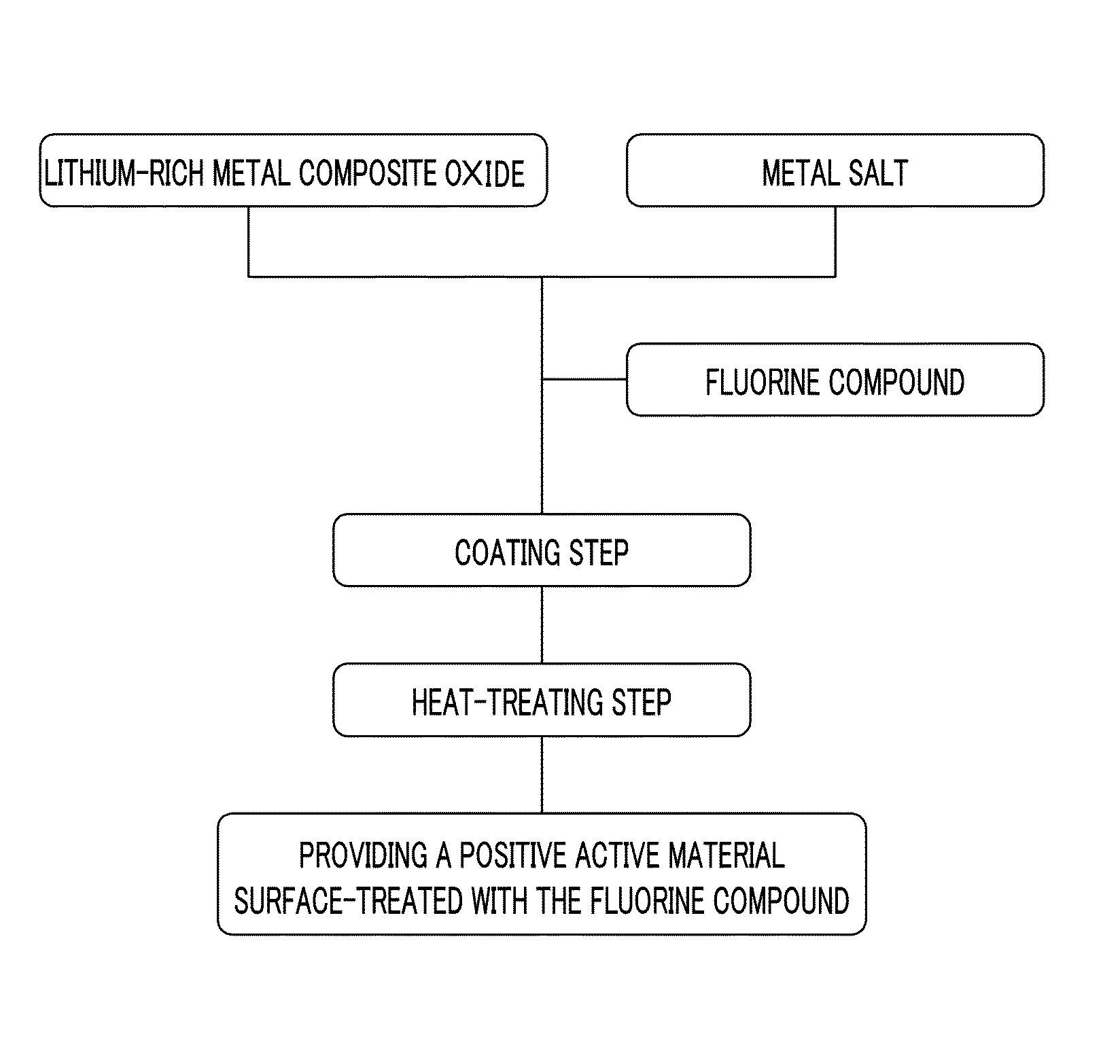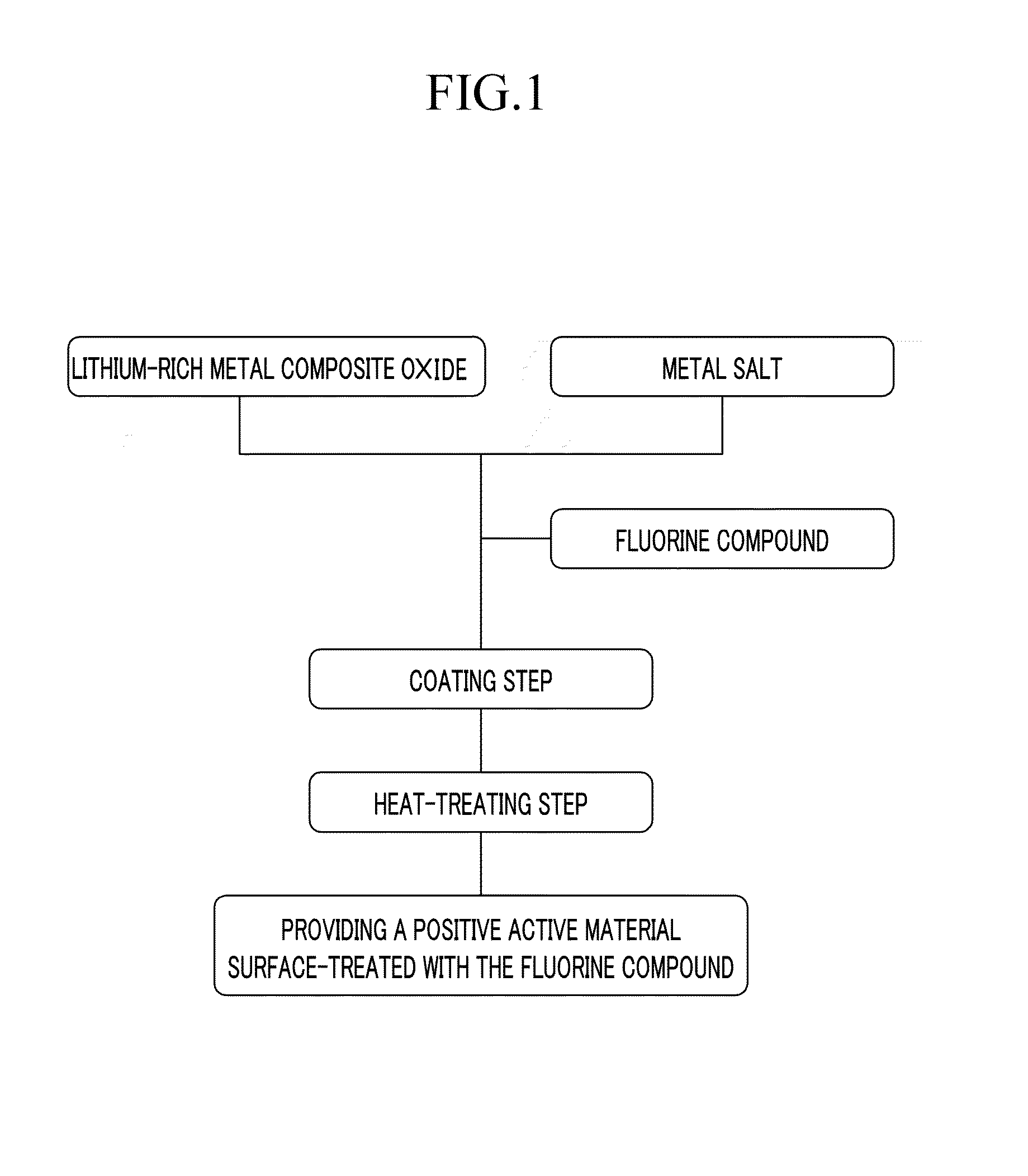Cathode active material for a lithium secondary battery, method for manufacturing same, and lithium secondary battery including same
a lithium secondary battery and active material technology, applied in the direction of batteries, nickel compounds, cell components, etc., can solve the problems of deteriorating positive active materials, limiting energy density, deteriorating battery performance and cycle-life characteristics, etc., and achieve excellent cycle-life characteristics.
- Summary
- Abstract
- Description
- Claims
- Application Information
AI Technical Summary
Benefits of technology
Problems solved by technology
Method used
Image
Examples
example 1
Manufacture of Lithium Metal Composite Oxide Core
[0082]A 1 M metal composite aqueous solution was prepared by adding nickel sulfate salt, cobalt sulfate salt, and manganese sulfate salt in a mole ratio of 0.20:0.10:0.70 to water in a co-precipitation reactor at a speed of 10 mL / min. Then, a 1 M ammonia solution was added to the obtained metal composite aqueous solution in the co-precipitation reactor at a speed of 5 mL / min, and sodium hydroxide was added thereto while pH of the mixture was maintained to be 11 by using a pH controller, and herein, the co-precipitation reactor had a cylindrical structure, and the diameter and depth of the co-precipitation reactor were appropriately adjusted. The metal composite aqueous solution was agitated at 1000 rpm and aged for 10 hours, obtaining a spherical shape precursor. The obtained precursor was washed with ultra pure water at greater than or equal to 30° C. until its pH became less than or equal to 8, and was dried at 80° C. for 12 hours. ...
example 2
[0085]A positive active material and a secondary battery cell were prepared according to the same method as Example 1, except for using 1.0 wt % of the coating layer based on the total amount of the lithium metal composite oxide.
experimental example
SEM Photograph and EDS Analysis
[0092]The co-precipitation precursors of Example 1 and Comparative Example 2 were photographed with a SEM using JSM-7000F (Jeol Ltd.) equipment, energy dispersive spectroscopy (EDS, Oxford) analysis was performed to measure polydispersity of metals (Mn, Co, Ni, Al, and F) on the surface of the positive active materials, and the results are provided in FIGS. 2 and 3.
[0093]The positive active materials shown in FIGS. 2 and 3 included a lithium metal composite oxide as a core and a coating layer including a fluorine compound on the surface of the core. Comparing FIG. 2 with FIG. 3, the positive active material of Example 1 showed more uniform distribution of Al and F elements than the positive active material of Comparative Example 1. Accordingly, the positive active material of Example 1 showed that the coating layer including a fluorine compound was further uniformly formed.
[0094]The secondary lithium battery cells according to Examples ...
PUM
| Property | Measurement | Unit |
|---|---|---|
| thickness | aaaaa | aaaaa |
| particle diameter | aaaaa | aaaaa |
| temperature | aaaaa | aaaaa |
Abstract
Description
Claims
Application Information
 Login to View More
Login to View More - R&D
- Intellectual Property
- Life Sciences
- Materials
- Tech Scout
- Unparalleled Data Quality
- Higher Quality Content
- 60% Fewer Hallucinations
Browse by: Latest US Patents, China's latest patents, Technical Efficacy Thesaurus, Application Domain, Technology Topic, Popular Technical Reports.
© 2025 PatSnap. All rights reserved.Legal|Privacy policy|Modern Slavery Act Transparency Statement|Sitemap|About US| Contact US: help@patsnap.com



